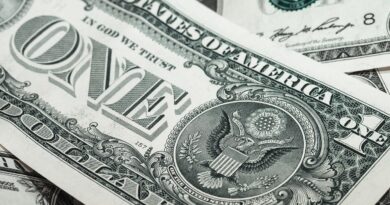How to trade USD/JPY
To trade USD/JPY, you should start by selecting a reputable forex broker that offers trading in USD/JPY. Once you have chosen a broker, open a trading account and fund it using your preferred payment method. Next, analyze the market using technical or fundamental analysis or both. Based on your analysis, decide whether to buy or sell USD/JPY. Place your order with your broker, either to go long or short USD/JPY. After that, monitor your trade and adjust your position if necessary. Use stop-loss and take-profit orders to automatically close your trade if it reaches a certain level. Finally, when you’re ready to close your trade, do so through your broker’s trading platform, realizing your profits or losses. Always remember that trading in USD/JPY involves risk, so it’s essential to have a clear trading plan, manage your risk, and trade only with funds you can afford to lose.
Content
Popular technical indicators for USD/JPY
–Moving Averages
–Relative Strength Index (RSI)
–Bollinger Bands
–Fibonacci Retracement
–Moving Average Convergence Divergence (MACD)
Learn to trade USD/JPY with TraderNick
Trading USD/JPY
USD/JPY Forex trading refers to the buying and selling of the US dollar against the Japanese yen in the foreign exchange market. The currency pair is one of the most actively traded pairs in the forex market, and it represents the exchange rate between the US dollar and the Japanese yen.
In USD/JPY Forex trading, traders attempt to profit from the fluctuation in the exchange rate between the two currencies. If a trader believes that the US dollar will appreciate against the Japanese yen, they will buy USD/JPY, expecting to sell it later at a higher price. Conversely, if they believe that the Japanese yen will appreciate against the US dollar, they will sell USD/JPY, expecting to buy it back later at a lower price.
Traders use various tools and strategies to analyze the market and make trading decisions, including technical analysis, fundamental analysis, or a combination of both. Successful trading in USD/JPY requires a solid understanding of the market and a clear trading plan, as well as the ability to manage risk effectively.
Understand the USD/JPY Market

The USD/JPY market represents the exchange rate between the US dollar and the Japanese yen. In other words, it shows how many Japanese yen are needed to buy one US dollar. For example, if the USD/JPY exchange rate is 110.00, it means that 110 Japanese yen are needed to buy one US dollar.
The USD/JPY market is one of the most actively traded currency pairs in the forex market, accounting for a significant portion of the daily trading volume. The exchange rate between the two currencies is influenced by various factors, including economic indicators. Those could be the performance of the US and Japanese economies, as well as their respective monetary policies, can affect the exchange rate between the two currencies. Indicators such as GDP, inflation, interest rates, and employment data can all impact the market.
It could also be geopolitical events for example, such as political tensions, elections, natural disasters, and other global events can also affect the USD/JPY market. For example, a crisis in the Middle East may cause an increase in oil prices, which can in turn impact the exchange rate.
Furthermore it could be due to market sentiment, such as the market sentiment or investor mood can impact the exchange rate, as traders may buy or sell based on their perception of the market’s direction.
Traders use various tools and strategies to analyze the market and make trading decisions, including technical analysis, fundamental analysis, or a combination of both. Successful trading in the USD/JPY market requires a solid understanding of the market, a clear trading plan, and effective risk management.
Popular technical indicators for USD/JPY

There are several technical indicators that traders use to analyze the USD/JPY market and make trading decisions. Some of the most commonly used technical indicators include:
Moving Averages
Moving averages are used to identify trends in the market. Traders use different types of moving averages, such as simple moving averages (SMA) or exponential moving averages (EMA), to determine the direction of the trend.
Relative Strength Index (RSI)
The RSI is a momentum oscillator that measures the strength of a trend. It indicates whether a currency pair is overbought or oversold, which can help traders make buy or sell decisions.
Bollinger Bands
Bollinger Bands are used to measure the volatility of a currency pair. The bands consist of three lines: the upper band, the lower band, and the middle band. When the market is volatile, the bands widen, and when the market is less volatile, they narrow.
Read about Bollinger Bands here
Fibonacci Retracement
Fibonacci retracement is a tool used to identify potential levels of support and resistance. It is based on the idea that markets tend to retrace a predictable portion of a move before continuing in the original direction.
Learn about Fibonacci retracement
Moving Average Convergence Divergence (MACD)
The MACD is a trend-following momentum indicator that shows the relationship between two moving averages. It helps traders identify changes in momentum and potential buy or sell signals.
These are just a few of the many technical indicators used by traders to analyze the USD/JPY market. It’s important to note that no single indicator can provide a complete picture of the market, and traders often use a combination of indicators to make informed trading decisions.
The best USD/JPY Traders
George Soros
A well-known investor and hedge fund manager who famously shorted the British pound in 1992, George Soros also traded USD/JPY during his career.
Read all about George Soros here
John Paulson
Another prominent hedge fund manager, John Paulson made a name for himself by betting against the subprime mortgage market in 2007. He has also traded in the currency markets, including USD/JPY.
Kyle Bass
A hedge fund manager who made a fortune betting against the US housing market in 2008, Kyle Bass has also been known to trade in the currency markets, including USD/JPY.
Andrew (Andy) Krieger
A currency trader who made a name for himself in the late 1980s by shorting the New Zealand dollar, Andrew Krieger also traded in the USD/JPY market.
These traders are known for their successful trading strategies and ability to generate significant profits in the financial markets. However, it’s important to note that trading in the USD/JPY market, like any market, involves risk, and not all traders are successful.






